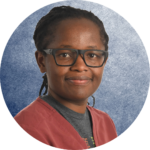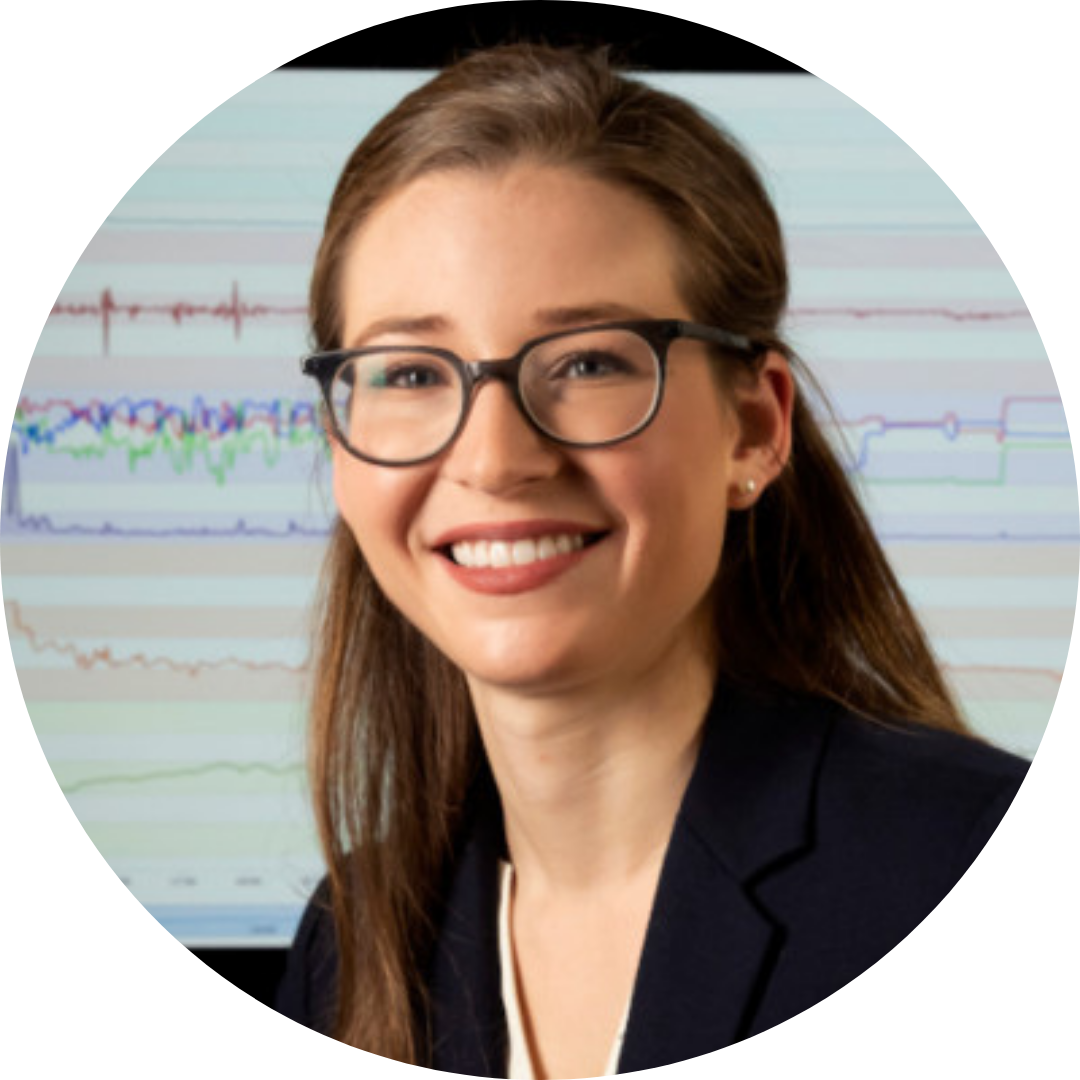BIO: Dr. Maia Hightower is a recognized healthcare executive and thought leader specializing in digital transformation, responsible AI, health equity, and clinical quality. With extensive experience as a C-level healthcare IT executive at leading organizations including the former Executive Vice President, Chief Digital and Technology Officer at a major academic health system and two time former Chief Medical Information Officer, Dr. Hightower has successfully pioneered initiatives that measurably enhanced clinical outcomes, community impact and operational excellence.As the founder of Equality AI, Maia advanced standards in AI quality, safety, and trustworthiness. Her unique blend of deep clinical expertise and executive experience positions her uniquely to guide your organization through critical transformations and strategic initiatives.
ABSTRACT: Achieving the full vision of precision health requires AI advances across biological scales from molecules to community. Yet our data, cyberinfrastructures, and innovation ecosystems are siloed and limit the scale and impact of both research projects and companies. In addition to the silo between biomedical discovery and healthcare delivery, a silo is emerging between digital monitoring and traditional healthcare systems. This talk will review the current digital health landscape and highlight fundamental flaws that are limiting precision real-world solutions for health. A vision of digital public utility is needed to transform the cyberinfrastructure of health AI, as exemplified by JupyterHealth, a new open-source platform for data and analytics interoperability for modular, scalable, precision health solutions.
BIO: Ida Sim, MD, PhD is Professor of Medicine and Computational Precision Health, Co-Director of the UCSF UC Berkeley Joint Program in Computational Precision Health, UCSF’s first Chief Research Informatics Officer, and a primary care physician. Dr. Sim’s research focuses on technology and policies for large-scale data sharing of health data. She is co-lead of JupyterHealth, co-founder of Open mHealth, a nonprofit organization that defines an IEEE global open standard for patient-generated health data interoperability and co-founder of Vivli, the world’s largest data sharing platform for participant-level clinical trial data. Dr. Sim is a member of the National Academy of Medicine and the American Society for Clinical Investigation, a Fellow of the American College of Medical Informatics, and a recipient of the United States Presidential Early Career Award for Scientists and Engineers (PECASE).
ABSTRACT: Biomarkers of aging play a vital role in understanding human longevity and have the potential to inform clinical decisions and assess interventions. Existing aging clocks are typically based on blood, saliva, vital signs, or imaging collected in a clinical setting. Wearables, however, can make convenient, frequent, and inexpensive measurements throughout daily life, scaled to an entire population. We propose PpgAge, a biomarker that is non-invasively, passively, and longitudinally measurable by photoplethysmography (PPG) at the wrist from a consumer wearable. With data from the Apple Heart & Movement Study (n=213,593 participants and over 149 million participant-days), we develop a model of healthy aging and study its association with disease and behavior. PpgAge predicts chronological age with mean absolute error (MAE) of 2.43 years (95% CI 2.33–2.53) in a healthy cohort and 3.18 years (95% CI 3.16–3.19) in a general cohort. Among participants with a PpgAge gap (i.e., the deviation between predicted age and chronological age) larger than 6 years, diagnosis rates of heart disease, heart failure, and diabetes are 1.5–5 times the age- and sex-adjusted average. PpgAge gap also predicts incident disease — a PpgAge gap of 6 years is associated with a significant increased risk of adverse cardiac events (hazard ratio 1.40 [95% CI 1.26–1.54]) when controlling for other risk factors. PpgAge also associates with behavior, including smoking, exercise, and sleep. In longitudinal analyses, PpgAge exhibits a sharp increase during pregnancy and around the time of certain types of cardiac events. With additional evidence, PpgAge may be a useful surrogate for healthy aging in the study of human longevity and the treatment of age-related conditions. (ClinicalTrials.gov Identifier NCT04198194.)
BIO: Guillermo Sapiro is an Augustine Family Professor in Electrical and Computer Engineering at Princeton University. He is also a Distinguished Engineer with Apple, Inc., where he leads a team on Health AI. G. Sapiro works on theory and applications in computer vision, computer graphics, medical imaging, image analysis, and machine learning. He has authored and co-authored over 500 papers in these areas and has written a book published by Cambridge University Press, January 2001.G. Sapiro received several awards including the Presidential Early Career Awards for Scientist and Engineers (PECASE) in 1998, the National Science Foundation Career Award in 1999, and the National Security Science and Engineering Faculty Fellowship in 2010. He received the Test-of-Time award at ICCV 2011 and at ICML 2019. G. Sapiro was the founding Editor-in-Chief of the SIAM Journal on Imaging Sciences. Full bio available on website.

ABSTRACT: Medical artificial intelligence has shown remarkable progress in diagnostic and clinical applications, yet concern grows over AI systems relying on “shortcut learning”—exploiting statistical patterns that correlate with outcomes without capturing genuine causal relationships. We will examine the dual nature of shortcut learning in medical AI, analyzing both its potential benefits and significant risks. While shortcuts can improve computational efficiency and enable rapid deployment in resource-constrained settings, they simultaneously present substantial threats to generalization, fairness, and reliability when deployed in heterogeneous clinical environments. We will review recent examples of shortcut learning in medical imaging, electronic health record analysis, and clinical decision support systems, presenting a framework for distinguishing between benign shortcuts that enhance performance and harmful shortcuts that undermine clinical utility. We will discuss proposed methodological solutions for detecting and mitigating problematic shortcuts, including causality-informed architectures, diverse training datasets, and human-AI collaborative validation. Shortcut learning represents both opportunity and threat—with the balance determined by how effectively the medical AI community addresses this fundamental challenge through rigorous development practices, transparent evaluation, and ongoing clinical oversight.
BIO: Dr. Gichoya is an associate professor at Emory university in Interventional Radiology and Informatics leading the HITI (Healthcare AI Innovation and Translational Informatics) lab . Her work is centered around using data science to study health equity. Her group works in 4 areas – building diverse datasets for machine learning (for example the Emory Breast dataset); evaluating AI for bias and fairness; validating AI in the real world setting and training the next generation of data scientists (both clinical and technical students) through hive learning and village mentoring. She serves as the program director for radiology:AI trainee editorial board and the medical students machine learning elective. She has mentored over 60 students across the world (now successful faculty, post doc, PHD and industry employees) from several institutions around the world. She has received several awards including the most influential radiology researcher in 2022, and is a 2023 Emerging Scholar in the National Academy of Medicine.
ABSTRACT: Medical Informatics (under various other names) began in the 1950s as pioneers began to develop computerized record systems that enabled analysis of the collected data to predict future diagnoses and outcomes of care. Decision analysis allowed individualized care strategies that could optimize clinical decisions to the preferences of individual patients. Because of the dearth of clinical data, the field turned to knowledge-based (or “expert”) systems where reasoning models were learned by interviewing and modeling the behavior of expert human doctors, using various formalisms including frame structures to represent prototypical disease situations and rules to represent human inferences. Recognizing the importance of being able to explain a system’s conclusions, these representations of expertise naturally supported meaningful explanations. Unlike most AI approaches of the time, the field focused on the importance of reasoning under uncertainty. Early systems used Naïve Bayesian models, but the need to deal with simultaneously co-occurring diseases led, by the 1980s, to more capable Bayesian Networks, which could be constructed from human knowledge or learned from available data. The growing availability of large clinical data sets began the era of machine learning in the 1990s, an era we still live in. Moving from classical clustering, classification, and regression models to more flexible methods such as support vector machines using kernel method greatly improved performance.
In the past 15 years, neural network methods came to the fore and swept aside most earlier approaches. The first key step in this progression was the realization that vector space embeddings of concepts and data often turned discrete optimization problems into continuous optimization ones, which could be solved relatively efficiently by techniques such as stochastic gradient descent. Next came the insight that the transformer model, based on deeply nested self-attention layers, could subsume many of the previously suggested mechanisms. Finally, in our current era, the GPT-like models that train transformers on simple tasks that don’t require human annotation beyond what is available from clinical records have led to LLMs and VITs that show unexpectedly remarkable abilities on a large range of clinical tasks.
Nevertheless, I argue that capabilities of earlier methods—to provide meaningful explanations of their reasoning, to make well-founded probability estimates, and to assure that their inferences are based on actual data and not hallucinated—pose real challenges to the current methods, whose internal machinery is opaque and often unreliable. Our goal should be integrating these earlier capabilities with the power of the newer methods.
BIO: Peter Szolovits is Professor of Computer Science and Engineering and of Health Sciences and Technology at MIT. He heads the Clinical Decision Making Group (MEDG) at the Computer Science and Artificial Intelligence Laboratory. His research focuses on AI and computing solutions to challenges of clinical medicine: decision support for diagnosis, therapy management, and patient-centered decision making. His AI foci are on machine learning, knowledge representation, prognostic modeling, and clinical natural language understanding. He is a member of the National Academy of Medicine and various honorary societies and recipient of the Morris Collen Award from the American College of Medical Informatics.Peter Szolovits is Professor of Computer Science and Engineering and of Health Sciences and Technology at MIT. He heads the Clinical Decision Making Group (MEDG) at the Computer Science and Artificial Intelligence Laboratory. His research focuses on AI and computing solutions to challenges of clinical medicine: decision support for diagnosis, therapy management, and patient-centered decision making. His AI foci are on machine learning, knowledge representation, prognostic modeling, and clinical natural language understanding. He is a member of the National Academy of Medicine and various honorary societies and recipient of the Morris Collen Award from the American College of Medical Informatics.

Dr. Jenna C. Lester is an Associate Professor of Dermatology at UCSF and founding Director of the Skin of Color Program. A graduate of Harvard College and Brown University’s medical school, she developed clinical services, curriculum, and research focused on dermatologic equity. Passionate about teaching, she integrates lessons on healthcare disparities and advocacy into education. Dr. Lester received UCSF’s Academy of Medical Educators Teaching Award. Her work has been featured in The New York Times, NPR, and CNN. She serves on the American Academy of Dermatology’s Augmented Intelligence Committee and AI Standards Task Force.

Dr. Celi is the principal investigator behind the Medical Information Mart for Intensive Care (MIMIC) and its offsprings, MIMIC-CXR, MIMIC-ED, MIMIC-ECHO, and MIMIC-ECG. With close to 100k users worldwide, an open codebase, and close to 10k publications in Google Scholar, the datasets have undoubtedly shaped the course of machine learning in healthcare in the United States and beyond. His group has written 3 open-access textbooks: “Secondary Analysis of Electronic Health Records” in 2016, “Global Health Informatics: Principles of eHealth and mHealth to Improve Quality of Care” in 2017, and “Leveraging Data Science for Global Health” in 2020. The first has been downloaded close to 2 million times and translated into Mandarin, Spanish, Korean and Portuguese. The group has created two open online courses, “Global Health Informatics'' and “Collaborative Data Science for Healthcare”. Finally, in partnership with hospitals, universities and professional societies across the globe, Dr. Celi and his team have organized close to 100 health data science events in 29 countries, bringing together students, clinicians, researchers, and engineers to leverage data routinely collected in the process of care.

Prof. Pranav Rajpurkar is Associate Professor of Biomedical Informatics at Harvard Medical School and Co-founder of a2z Radiology AI. A Stanford-trained computer scientist, his research focuses on developing AI systems that match physician-level expertise through multi-modal clinical data interpretation. At Harvard, his lab develops frameworks for evaluating and advancing medical AI in clinical language models and medical imaging. His research includes over 130 publications in journals like Nature, NEJM, and Nature Medicine, garnering over 39,000 citations. Prof. Rajpurkar has educated over 84,000 students through his AI in Medicine courses at Harvard and Coursera. Named among MIT Tech Review's Innovators Under 35 (2023), Forbes 30 Under 30 in Science (2022), and Nature Medicine's Early-career Researchers To Watch (2022), he continues to advance the integration of AI in clinical practice.


Dr. Emily Alsentzer is an Assistant Professor in Biomedical Data Science and, by courtesy, Computer Science at Stanford University. Her research leverages machine learning (ML) and natural language processing (NLP) to augment clinical decision-making and broaden access to high quality healthcare. She focuses on integrating medical expertise into ML models to ensure responsible deployment in clinical workflows. Dr. Alsentzer completed a postdoctoral fellowship at Brigham and Women’s Hospital where she worked to deploy ML models within the Mass General Brigham healthcare system. She received her PhD from the Health Sciences and Technology program at MIT and Harvard Medical School and holds degrees in computer science (BS) and biomedical informatics (MS) from Stanford University. She has served as General Chair for the Machine Learning for Health Symposium and founding organizer for SAIL and the Conference on Health, Inference, and Learning (CHIL).

Dr. Feng is an Assistant Professor in the Department of Epidemiology and Biostatistics at the University of California, San Francisco and the UCSF-UC Berkeley Joint Program in Computational Precision Health. She is also the data science lead on the PROSPECT team, the digital innovation taskforce for the Zuckerberg San Francisco General Hospital.

Josh is a physician-scientist with experience across disciplines (pulmonary/critical care medicine, pharmacology, molecular metabolism, data sciences), across phases of research (basic to translational to clinical to population), across sectors (academia, federal government, private sector, public-private partnerships), and across domains (person-centered, strategic, policy, regulatory, operations, communications). His passion is finding and creating opportunities to unify the scientific and public health enterprise across traditional silos to amplify the good that can be done.

Chris Lunt is the Chief Technology Officer for the All of Us Research Program. All of Us has enrolled 800K+ participants to power a research platform that accelerates precision medicine. His experience spans work in the government and commercial sectors, including founding venture-backed startups. He is a life-long learner who hosts a science book club.

Dr. Nigam Shah is Professor of Medicine at Stanford University, and Chief Data Scientist for Stanford Health Care. His research is focused on bringing AI into clinical use, safely, ethically and cost-effectively. Dr. Shah is an inventor on eight patents, has authored over 300 scientific publications, and has co-founded three companies. Dr. Shah was inducted into the American College of Medical Informatics (ACMI) in 2015 and the American Society for Clinical Investigation (ASCI) in 2016. He holds an MBBS from Baroda Medical College, India, a PhD from Penn State University and completed postdoctoral training at Stanford University.

I am an Assistant Professor in the Division of Clinical Informatics and Digital Transformation (DoC-IT) in the Department of Medicine at the University of California, San Francisco (UCSF). Prior to this role, I was an Assistant Professor in the Department of Information and Computer Sciences at the University of Hawaiʻi at Mānoa. My research group at UCSF, funded by both the NIH and NSF, works on consumer digital health informatics, with an emphasis on human-centered AI approaches applied to the context of creating diagnostics, therapeutics, and monitoring tools using wearables, smartphones, and specialized health hardware.

Jessilyn Dunn is an Assistant Professor of Biomedical Engineering at Duke University. Her work focuses on developing new tools and infrastructure for multi-modal biomedical data integration to drive precision/personalized methods for early detection, intervention, and prevention of disease.

Dr. Daneshjou studied Bioengineering at Rice University before matriculating to Stanford School of Medicine where she completed her MD and a PhD in Genetics with Dr. Russ Altman as part of the medical scientist training program. She completed dermatology residency at Stanford as part of the research track and completed a postdoc in Biomedical Data Science with Dr. James Zou. She currently is the assistant director of the Center of Excellence for Precision Heath & Pharmacogenomics, director of informatics for the Stanford Skin Innovation and Interventional Research Group (SIIRG), a founding member of the Translational AI in Dermatology (TRAIND) group, and a faculty affiliate of Human-centered Artificial Intelligence (HAI) and the AI in Medicine and Imaging (AIMI) centers.

As the co-founder and Board President of The Light Collective, Andrea Downing leads efforts to advance rights, interests, and voices of patient communities adopting emerging technology. Andrea co-authored the Patient AI Rights Initiative, the only patient-led effort to independently define ethical goals and guardrails for Health AI. As a privacy & security researcher, her investigations into privacy vulnerabilities—such as security risks in “Closed” Facebook groups for health-related support—revealed systemic issues in social media platforms’ treatment of sensitive health data. This work sparked widespread attention, leading to regulatory responses from bodies such as the FTC and HHS, which have moved to restrict the use of surveillance trackers in healthcare contexts. Beyond her leadership roles, Andrea is a Stanford Medicine X ePatient Scholar and an advisor to multiple national initiatives, including CancerX Moonshot and the National Academy of Medicine’s AI Code of Conduct workgroup. Her published work addresses critical issues in health advertising privacy, peer support for cancer patients, and the ethics of digital health innovation.

Dr. Daneshjou studied Bioengineering at Rice University before matriculating to Stanford School of Medicine where she completed her MD and a PhD in Genetics with Dr. Russ Altman as part of the medical scientist training program. She completed dermatology residency at Stanford as part of the research track and completed a postdoc in Biomedical Data Science with Dr. James Zou. She currently is the assistant director of the Center of Excellence for Precision Heath & Pharmacogenomics, director of informatics for the Stanford Skin Innovation and Interventional Research Group (SIIRG), a founding member of the Translational AI in Dermatology (TRAIND) group, and a faculty affiliate of Human-centered Artificial Intelligence (HAI) and the AI in Medicine and Imaging (AIMI) centers.